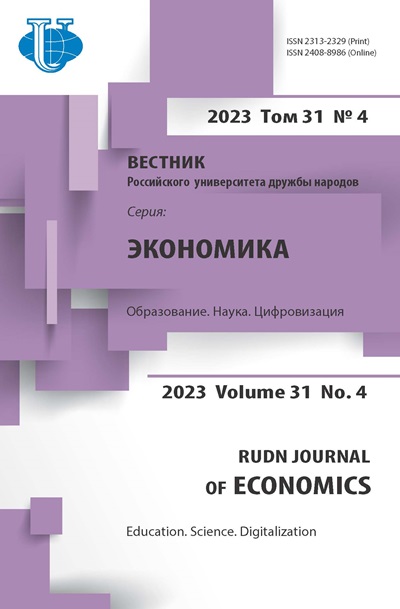Tools for studying the digital development rates of economic systems at country and region level
- Authors: Baranova N.M.1, Larin S.N.2, Basharina O.Y.3,4
-
Affiliations:
- RUDN University
- Central Economics and Mathematics Institute of Russian Academy of Science (CEMI RAS)
- Ural State University of Economics
- Matrosov Institute for System Dynamics and Control Theory of Siberian Branch of the Russian Academy of Sciences
- Issue: Vol 31, No 4 (2023): EDUCATION. SCIENCE. DIGITALIZATION
- Pages: 687-699
- Section: ECONOMIC GROWTH AND SOCIO-ECONOMIC DEVELOPMENT
- URL: https://journals.rudn.ru/economics/article/view/37305
- DOI: https://doi.org/10.22363/2313-2329-2023-31-4-687-699
- EDN: https://elibrary.ru/SKTQBY
Cite item















